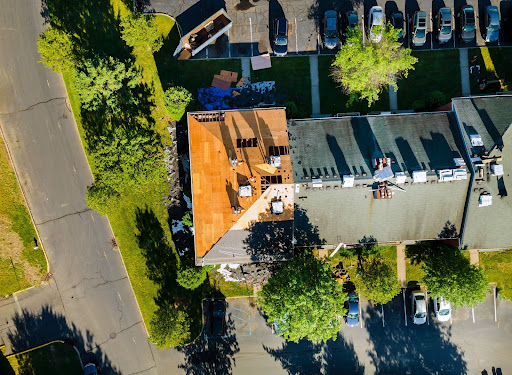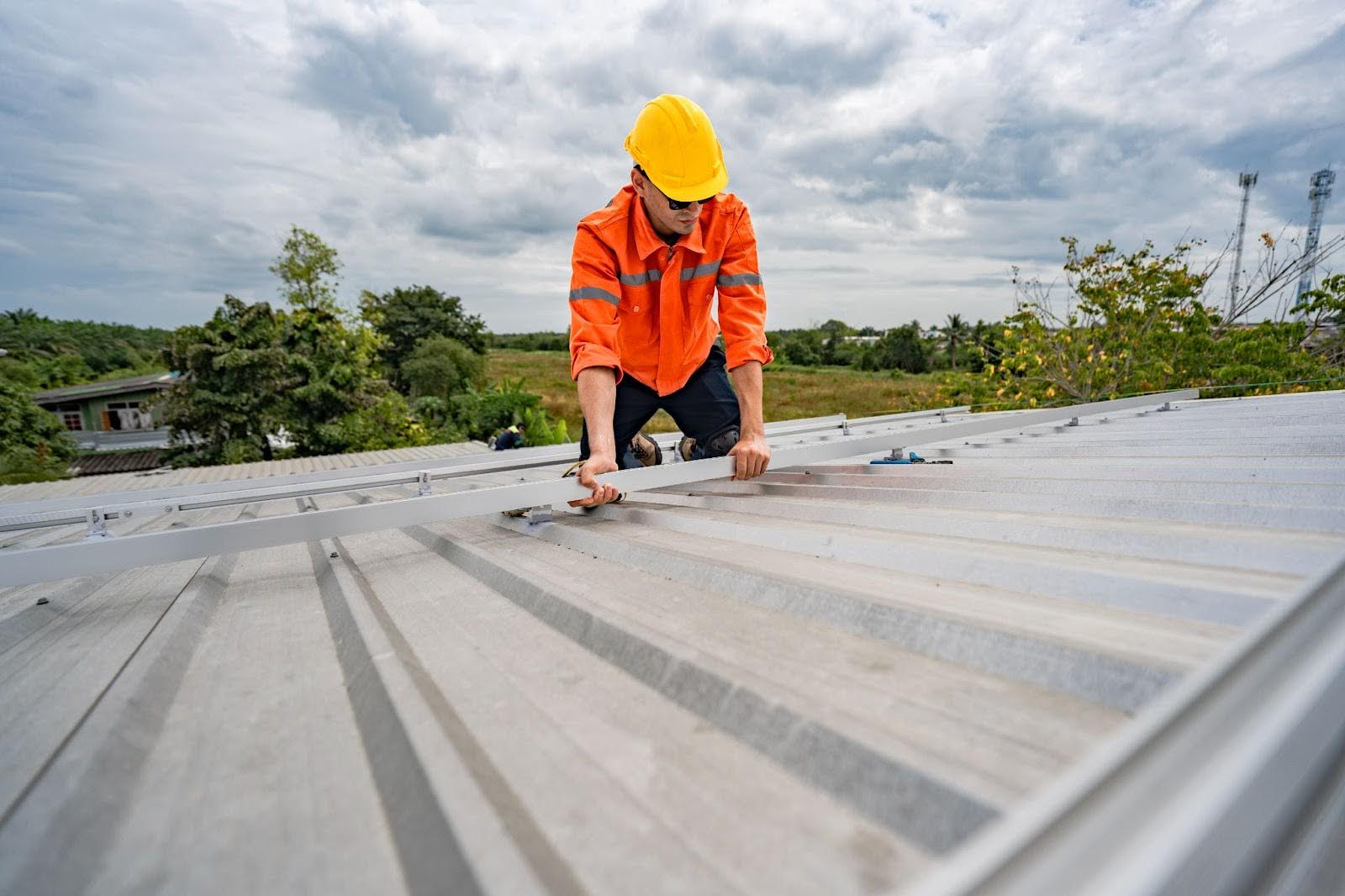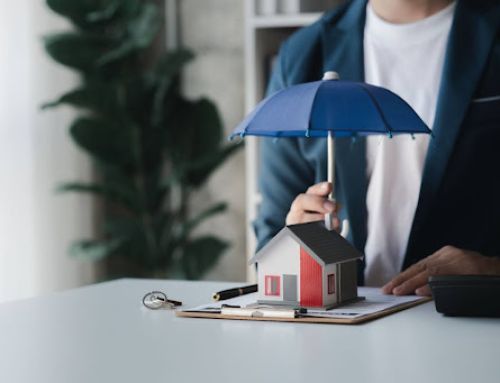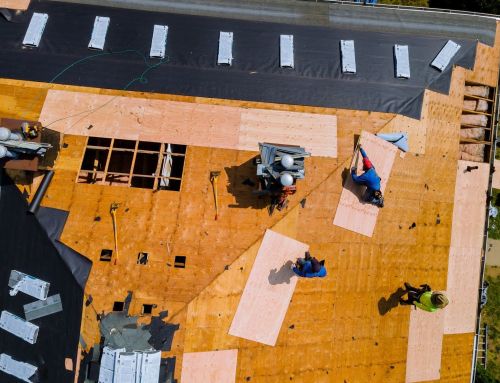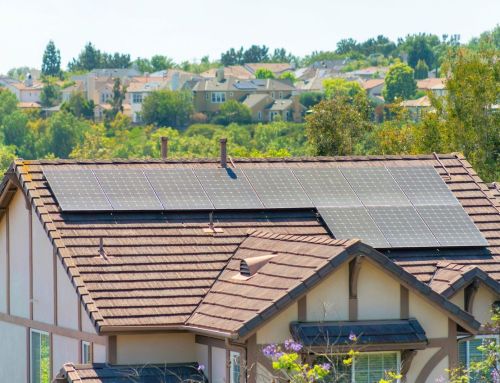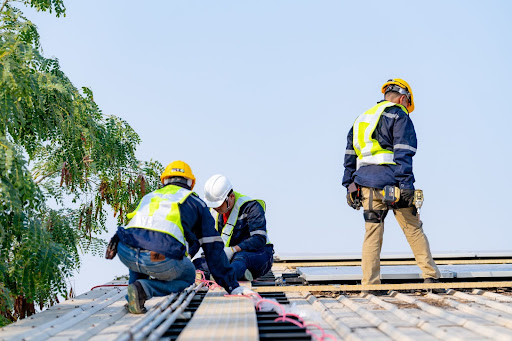
When homeowners consider installing solar panels in Florida, most focus on reducing their electricity bills. However, there’s something else they should consider first: their roof. As a contractor who’s worked on hundreds of homes, I see people make this mistake all the time. And it costs them a lot of money later.
Your roof and solar panels need to work together for decades. In Florida, that means dealing with hurricanes, heavy rain, and blazing hot sun. Your roof isn’t just holding up your solar panels – it’s protecting a significant investment that should last 25 to 30 years.
Getting both systems working together from day one saves you thousands of dollars and eliminates a lot of stress down the road.
Why Your Roof Condition Affects Your Solar Investment
Here’s the problem most people don’t know about: solar panels come with 25 to 30-year warranties. But your roof might not last that long. Most roofs in Florida require replacement every 15 to 20 years due to the harsh weather conditions.
Picture this: you install solar panels today. Ten years later, your roof begins to leak and requires replacement. Now you have to pay to remove all those solar panels, replace your roof, then put the panels back up. That extra work can cost between $3,000 and $7,000 in addition to your roofing bill.
Florida also has strict rules regarding the strength of your roof. After all those hurricanes, the state requires roofs that can handle winds of 150 mph or more. Your roof isn’t just protecting your solar panels – it’s protecting your whole family and everything you own.
Red Flags That Signal Time for a New Roof
Before calling a solar company, take a close look at your roof. Here are the warning signs that indicate it’s time for a new roof before installing solar panels.
Age is the biggest clue. If your roof is more than 15 years old, consider replacing it before installing solar panels. Florida’s heat and storms make roofs wear out faster than in other states. A roof that might last 25 years in upstate areas often only lasts 15 to 18 years here.
Look for obvious damage. Walk around your house and check for missing or curling shingles, cracked tiles, or spots where you can see through to the wood underneath. These problems will worsen once you add the weight of solar panels and expose them to increased wind.
Check if your roof meets the standard. Many older roofs don’t meet current hurricane standards. When you add solar panels, your local building department may require you to upgrade your entire roof to meet new codes. This surprise can blow your budget if you don’t plan for it.
Think about energy savings, too. Old, dark roofs soak up heat like a sponge. This causes your air conditioning to work harder and reduces the efficiency of your solar panels. Newer, light-colored roofing materials reflect heat, helping your solar panels work more efficiently.
Timing Your Roofing and Solar Projects
Smart homeowners don’t treat roofing and solar as separate projects. When you coordinate them, you save money and avoid headaches.
Replace your roof first for peace of mind. When you start with a brand new roof, you know it’ll last as long as your solar panels. You receive a new warranty, your home meets all current building codes, and you won’t have to worry about removing panels for future roof work.
Conduct both projects simultaneously to save money. You need permits for both jobs anyway. Having one contractor handle everything means less paperwork, better coordination, and usually lower costs. When crews can work on related tasks together, they work more efficiently.
Choose materials that work well together. Some roofing materials are designed to work perfectly with solar panels. Metal roofs, for example, last 40 to 50 years on average, making solar installation easier. While they cost more upfront than regular shingles, they last as long as your solar panels.
Material Choices That Make Sense in Florida
Different roofing materials work differently with solar panels. Here’s what you need to know to make the right choice for your home.
Regular shingles are the most popular choice because they don’t cost too much, and most solar installers know how to work with them. The downside? They need replacing every 15 to 20 years in Florida, which means you might face that expensive panel removal and reinstallation problem later.
Metal roofs are becoming more popular with homeowners who want solar. They last as long as your solar panels (sometimes longer), handle hurricanes really well, and stay cooler in the sun. This actually helps your solar panels work better. Yes, metal costs more upfront, but you probably won’t need to replace it for 40 to 50 years.
Tile roofs look great and last a long time, but they need special equipment for solar installation. Not every solar installer knows how to work with tiles properly, so your choices might be limited. But if you find the right contractor, tiles can last 30 to 50 years.
Cool roofing materials help no matter what type you choose. These reflect more sunlight instead of soaking up heat. In Florida’s intense sun, this keeps your house cooler and helps your solar panels work more efficiently.
Financial Benefits of Coordinated Projects
Combining your roof and solar projects can actually save you money in several ways.
You’ll spend less on labor when contractors can do related work at the same time. Instead of paying for two separate projects with different permits and inspections, everything happens together. Many contractors, like Guardian Home, offer package deals that reflect these savings.
The federal solar tax credit might help pay for your roof. The IRS lets you include roofing costs in your solar tax credit if the roof work is necessary for your solar installation. This can effectively reduce what you pay for roofing.
Your insurance might cost less too. New roofs that meet current building codes often qualify for discounts on your homeowner’s insurance. These savings add up year after year, making both your roof and solar panels pay for themselves faster.
You’ll spend less on maintenance long-term. When both systems are installed together with matching warranties, you deal with one contractor instead of juggling different companies. If something goes wrong, there’s no finger-pointing about whose fault it is.
Navigating Florida’s Regulatory Environment
Florida has lots of rules about roofing and solar installations. Understanding these rules helps you plan better and avoid surprises.
Wind strength requirements are really strict. After all those hurricanes, Florida requires new roofs to handle extremely high winds. Solar panels create additional wind pressure, especially around the edges of your roof. Your contractor needs to account for this in their design.
You need permits for both projects. Local building departments review your plans to make sure everything meets code. Having one contractor handle both makes this process smoother and reduces the chance of conflicting requirements.
Your neighborhood might have rules, too. Some homeowner associations limit what colors or materials you can use on your roof. Others restrict when construction can occur or require approval before it begins. Review these rules early to avoid delays.
There are programs to help you pay for improvements <link to blog 4>. The federal solar tax credit can include some roofing costs. Florida also offers property tax breaks for solar equipment, which may consist of qualifying roof improvements. These programs have specific rules, so make sure you understand them.
Selecting the Right Professional
Picking the right contractor for both roofing and solar work takes more research than hiring someone for just one job. Here’s what to look for.
Make sure they’re licensed for both types of work. Roofing and solar installation require different licenses. Look for contractors who have both rather than companies that subcontract part of the work. This gives you clearer responsibility and better warranty coverage.
Ask about their experience with combined projects. General experience isn’t enough. You want contractors who have done roof and solar projects together, especially in your area. Local experience with building codes and weather conditions makes a big difference.
Understand what’s covered by warranties. Combined projects make warranties more complicated. Make sure you understand what each part of the work is covered by and how warranties work together if problems develop. Single contractors often offer better warranty coverage.
Verify their insurance coverage. Your contractor should carry proper insurance for both roofing and electrical work. This protects you from liability if someone gets hurt and makes sure the work is done professionally.
Making the Right Decision for Your Home
Whether you should replace your roof before going solar depends on your specific situation, but combining the projects makes the most sense. A professional roof inspection can provide an honest assessment of your roof’s condition.
Timing is usually the deciding factor. If your roof is showing wear or is getting close to 15 years old, replacement before solar installation will save you money. If you have a newer roof in good shape, you might be able to add solar now, but you should plan for coordination later.
Budget doesn’t have to stop you. Yes, doing both projects costs more upfront, but financing programs like PACE can help homeowners afford combined projects. These programs recognize that energy efficiency improvements add long-term value and offer payment plans that work with the benefits.
Get a professional inspection. The only way to make a smart decision is to have qualified contractors look at your roof and give you honest feedback. They can tell you how much life your roof has left and explain how different timing approaches affect your total costs.
Planning both your roof and solar installation carefully protects your investment and gets you the most benefits long-term. Talk to licensed professionals who understand both systems and can walk you through your options. You’ll be glad you took the time to do it right.
Frequently Asked Questions
Yes, there are several ways to finance both projects together. The PACE program lets homeowners finance energy improvements, including both roofing and solar, with payments that go on your property tax bill. Also, the federal solar tax credit might cover parts of your roofing costs when they’re directly related to solar installation. Many contractors offer financing packages designed specifically for combined projects too.
Small repairs can often be done by working around the panels, but big jobs require taking the panels off. This is exactly why checking your roof before installing solar is so important. If panels need to come off for roof work, you’ll pay extra labor costs and might void some warranties. Good planning prevents most of these problems.
Actually, doing both projects together usually costs less than doing them separately. While you pay more upfront, you save money on permits, having contractors come out twice, and avoiding those expensive panel removal costs later. Most homeowners save 10% to 15% compared to separate projects, plus you avoid the $3,000 to $7,000 it costs to remove and put back panels if your roof fails early.
Most homeowner’s insurance policies cover solar panels as part of your house, but every policy is different. The important thing is making sure they’re installed correctly according to Florida’s building rules. Panels on newer roofs that meet current wind standards usually have better coverage and less chance of getting damaged. Always check with your insurance agent before you start the project.
You can, but I usually recommend checking how much life your roof has left first. A 10-year-old shingle roof in Florida is likely to last 5 to 10 more years before it needs replacement. If you plan to stay in your home for a while, replacing your roof now, along with solar installation, often saves money compared to having to remove and reinstall the panels later.

